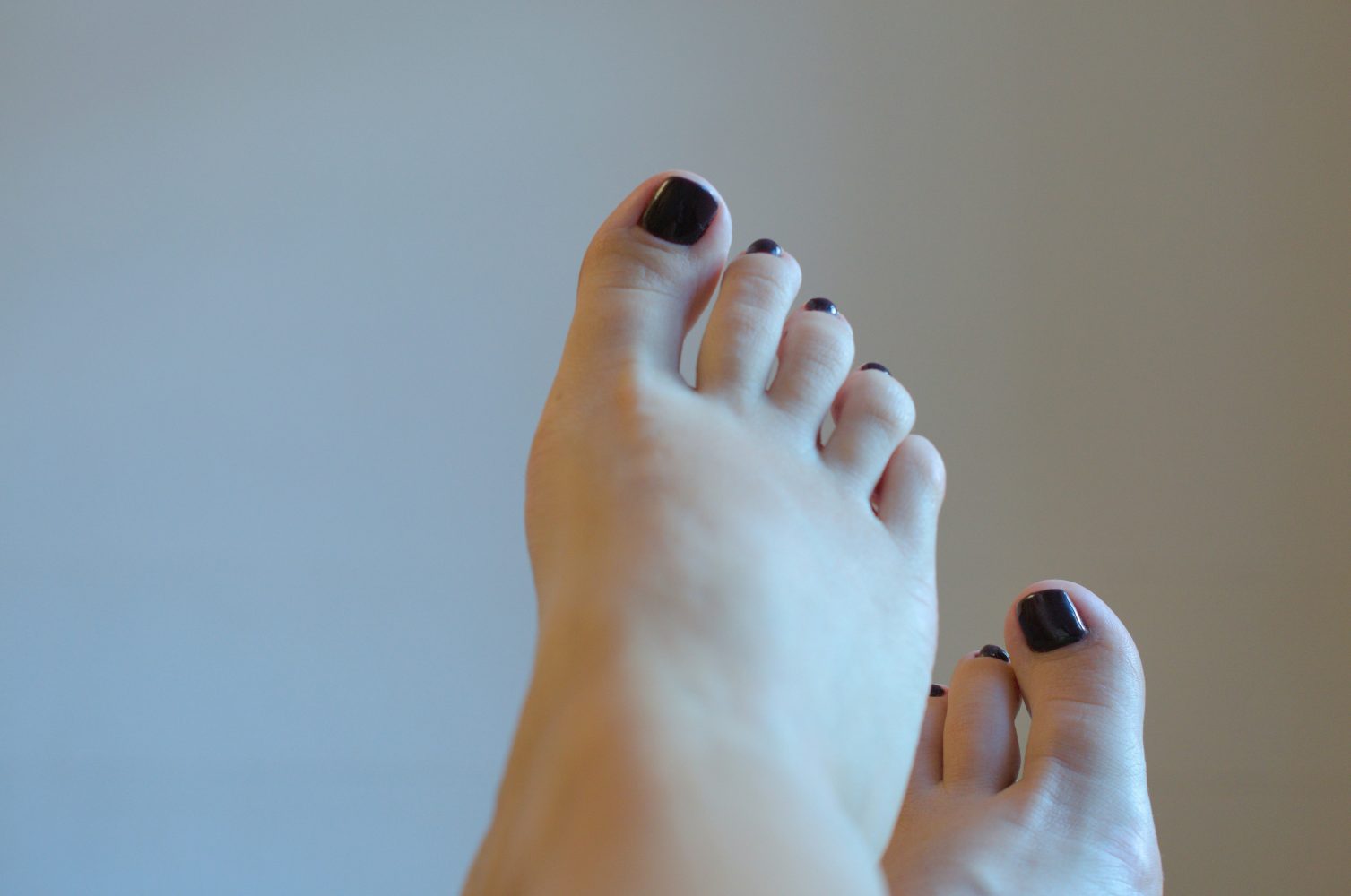Blood Blisters on the Toes and Heels of Diabetic Patients
A blood blister is not usually an alarming condition, but it can become serious in diabetic patients. Without the proper care, a diabetic blood blister on foot can develop into an ulcer, potentially becoming infected, leading to gangrene and amputation. You can see why this small wound should be dealt with immediately.
This article provides information about blood blisters, including treatments that can help prevent them from worsening.
What is a Blood Blister?
A blood blister is similar to other blisters, but it is filled with blood rather than clear fluid. It may appear red, blue, or black. Blood blisters may be caused by an injury, such as pinching your finger or toe, or friction related to an uncomfortable shoe or the use of a hammer.
Blood blisters form on the epidermis, or the outer layer of the skin. They differ from other blisters in that they damage both the blood vessel and the skin, which is why they fill with blood. The blisters typically appear on your hands, fingers, feet, and toes, but in some instances, they may form on joints and bony areas and even inside the mouth.
Why Diabetics Have Issues with Blood Blisters
A blood blister will typically go away on its own, but individuals with diabetes may experience complications that can cause them to linger and develop into foot ulcers. Here are some conditions that may inhibit healing.
- Diabetic Neuropathy: Chronic elevated blood sugar can cause nerve damage, making people with diabetes unable to feel their feet. They may not feel the pain of a blood blister, which means they don’t notice it exists. Injured parties may fail to address blisters, allowing them to develop into bigger issues.
- Poor Circulation: High blood sugar also narrows blood vessels, leading to poor circulation. A lack of circulation further contributes to a loss of feeling in the feet and extremities. It also means that nutrients and oxygen are not distributed through the blood, which slows down the healing process.
- Weakened Immunity: Individuals with diabetes often have weakened immune systems, resulting in a reduced ability to heal wounds and fight infections.
How to Avoid Blood Blisters
People with diabetes should take steps to prevent blood blisters on heel and blood blister toe diabetic. Here are some preventative measures:
- Wear Comfortable Shoes: Uncomfortable shoes are a prime cause of blood blister foot diabetes. You can ensure your shoes are comfortable by:
- Wearing shoes with square or rounded toes
- Avoid high heels that may pinch your feet or cause them to be set at an uncomfortable angle.
- Ensure there is a half to full thumbnail width of space between your toe and the end of the shoe. Avoid shoes that pinch around the heels.
- Shoes that are too big are not good either. Your feet will slide around when you walk, causing irritation. Choose shoes that stay in place when you move.
- Opt for shoes with cushioned soles to avoid blood blisters on the bottom of your foot diabetic. Add padding to shoes if necessary.
- Protect Your Feet: Wear socks and shoes whenever possible. Going barefoot increases the risk of foot injuries.
- Keep Feet Dry: Moist feet are susceptible to friction and can be easily damaged. Prevent injuries by thoroughly drying your feet after showers. Wear moisture-wicking socks to keep feet dry.
- Moisturize Feet: Moisture can make feet susceptible to injuries. However, overly dry feet can also be an issue. The best solution is to drink water to keep skin hydrated. Consider applying petroleum jelly to your feet and following up with talcum powder.
- Be Mindful of Activities: Refrain from or minimize activities that may cause foot pain.
- Use Blister Prevention: Tapes, patches, and creams may protect areas of the foot that are likely to become irritated.
- Keep Feet Warm: Though unlikely, blood blisters can be a symptom of severe frostbite. Keep your feet warm to prevent this condition.
- Be Cautious of Medications: Certain medications, such as blood thinners, can increase the risk of blood blisters. Inform your healthcare providers about your medical condition to ensure they don’t prescribe drugs that may cause dangerous side effects.

Blood Blister on Feet Treatment
It’s best to avoid getting blood blisters, but if they form, they should be treated immediately, before they become bigger problems. Blood blister on foot remedy treatment methods include:
- Protecting the Area: Wash your hands, then wash the blister with soap and water. Treat it with an antibiotic cream. Then, place a bandage or cushion over the wounded area to protect it from friction. The bandage should be changed at least once a day.
- Take Painkillers: Over-the-counter painkillers may help dull the pain of the blister.
- Don’t Lance the Blister: Lancing may be recommended for some friction blisters, but if you break the skin of a blood blister, it will make the wound prone to infection.
- See a Doctor if Necessary: If the blood blister isn’t healing, it may be best to visit a doctor for drainage. People with diabetes may want to alert their doctors immediately so they can determine the best way to treat an ulcer.
Monitoring for Blood Blisters
People with diabetes should also regularly monitor their feet to ensure they don’t develop blisters or other types of wounds that can progress into ulcers. They should check their feet daily to ensure they are free of injuries. If injuries are detected, they should be addressed immediately.
A visual inspection can be helpful, but the Feetsee app does a more thorough job. It monitors your foot temperature for signs of inflammation. If elevated temperatures are detected, an alert is sent to your doctor indicating a need for immediate treatment.
Visit us online to learn more about how our unique detection device can help you achieve your wellness goals.
FAQs
How to Treat Blood Blister Under a Callus?
In some instances, a blood blister may form under a callus. Blood blister under callus treatment does not differ from any other blood blister treatment. Protect the area and consult a doctor if necessary. Avoid popping the blister or the callus.
How Long Does a Blood Blister Last?
Blood blisters typically last one to two weeks, depending on the size of the blister and the type of care applied. During the healing period, the body will reabsorb the blood from the blister.
When Should I Go to the Doctor for a Blood Blister?
You should see a doctor about a blood blister if it doesn’t heal within a week or shows signs of being infected. People with diabetes may want to see a doctor right away to ensure the blister is adequately treated and doesn’t develop into an ulcer.
Can Melanoma Look Like a Blood Blister?
Yes, nodular melanoma can resemble a blood blister. However, blisters associated with melanoma are solid, firm, and do not resolve on their own. If you suspect your blood blister may be melanoma, consult a doctor immediately.
What if a Diabetic Foot Ulcer is Left Untreated?
If a diabetic foot ulcer is not treated, it can become infected. If the infection spreads, it can develop into gangrene, a condition that may necessitate amputation. The disease can also spread into the bones and the bloodstream, causing sepsis.

Detect Early, Prevent Amputations
Diabetic foot ulcers (DFUs) lead to significant discomfort, pain, numerous amputations, and billions of dollars in healthcare costs each year.
